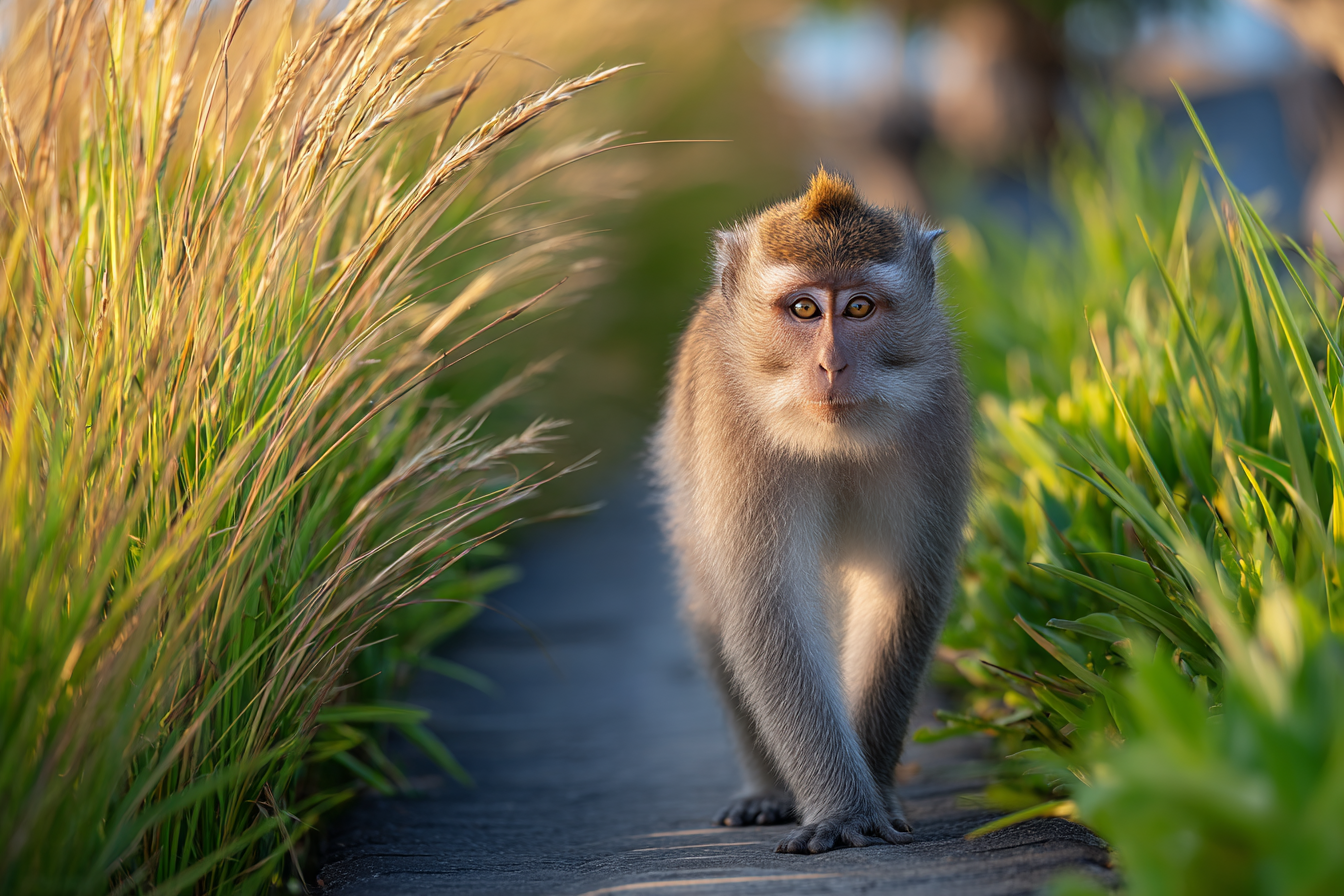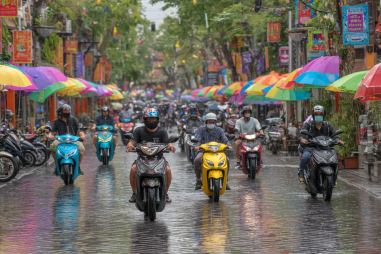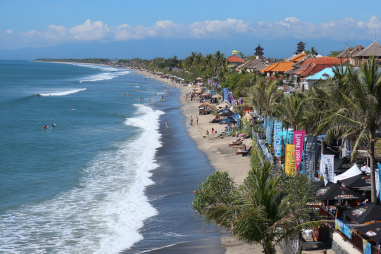Nestled on the southern tip of Bali, Uluwatu is renowned for its dramatic cliffside views and pristine beaches. But beyond the stunning landscapes, Uluwatu offers a rich tapestry of wildlife and natural wonders that enchant visitors seeking more than just the waves and sunsets. From playful long-tailed macaques to vibrant marine ecosystems, the area is a haven for nature lovers. This guide will take you on a journey through Uluwatu’s unique environment, highlighting the fascinating fauna, protected areas, and ways to enjoy the region’s beauty with respect for its delicate ecosystems.
Uluwatu’s Natural Environment: A Unique Coastal Haven
Uluwatu forms part of Bali’s Bukit Peninsula, characterized by towering limestone cliffs that plunge dramatically into the Indian Ocean. This rugged terrain is dotted with savanna grasslands, coastal forests, and small patches of tropical greenery that support a wide variety of flora and fauna. The region’s combination of sea, rock, and greenery creates a complex habitat where both land and marine wildlife thrive. The climate is tropical with a clear division between dry and rainy seasons, which further influences the diversity and activity of native species.
The cliff edges provide spectacular vantage points for spotting seabirds diving into the water, while the surrounding forests shelter mammals and reptiles typical of the Indonesian archipelago. Coconut palms sway above rocky coves, and coral reefs extend underwater, forming an ecological mosaic worthy of exploration.
Monkeys at Uluwatu Temple
One of Uluwatu’s most iconic wildlife inhabitants are the long-tailed macaques that reside around Uluwatu Temple, an ancient sea temple perched perilously on a cliff. These monkeys are not only a popular attraction but also an important part of the local ecosystem. They are known for their intelligence and curiosity, often approaching visitors in search of food.
While the macaques are charming to watch, it’s important to interact with them responsibly. They are wild animals and can become aggressive if provoked or if they sense food. Use caution by keeping a safe distance, securing personal belongings, and avoiding feeding them directly. This practice ensures the monkeys remain healthy and prevents stress or harmful behavior that may arise from human interference.
Native Birds and Marine Life
Birdwatchers will find Uluwatu a rewarding destination. The Bukit Peninsula is home to a variety of native and migratory birds such as the Javan Myna, Bali Myna (critically endangered), and different species of kingfishers and eagles. Early mornings and late afternoons are ideal times for bird spotting, especially near coastal cliffs and forested areas.
Underwater, Uluwatu’s reefs teem with life and color. The coral gardens attract myriad fish species including parrotfish, clownfish, and occasionally reef sharks. Snorkeling and diving excursions around nearby beaches like Padang Padang and Dreamland allow an intimate glimpse into these underwater habitats. Conservation efforts aim to protect coral reefs from bleaching and damage caused by tourism and fishing.
Protected Areas and Parks
Several conservation and protected areas around Uluwatu work to preserve its natural heritage. Although the region doesn’t have large national parks like other parts of Bali, smaller reserves and community-led initiatives help safeguard important habitats. Some protected mangrove patches and coastal forests act as vital breeding grounds for marine species and provide shelter for birds and small mammals.
Community-based forest management promotes sustainable tourism and involves local residents in protecting these ecosystems. Educational programs and clean-up campaigns also bolster conservation efforts, making Uluwatu a model for balancing tourism with environmental stewardship.
Responsible Wildlife Tourism
Respecting wildlife in Uluwatu is key to ensuring these natural wonders remain intact for future generations. Ecotourism practices encourage visitors to minimize their impact by following guidelines such as:
- Keeping a safe distance from animals and avoiding direct interactions, especially with monkeys.
- Not feeding wildlife, which can alter their natural behavior and diet.
- Using reef-safe sunscreen when swimming or diving to protect delicate coral ecosystems.
- Sticking to marked trails to prevent disturbance of plants and habitats.
- Participating in local conservation projects or supporting eco-friendly businesses.
By engaging responsibly, visitors can appreciate Uluwatu’s biodiversity without contributing to habitat degradation or animal distress.
Nature Hiking and Coastal Trails
Exploring Uluwatu on foot is one of the best ways to immerse yourself in its wildlife and natural beauty. Several hiking and coastal trails offer scenic views and encounters with native flora and fauna. Popular routes include:
- The Uluwatu Temple trail, which descends from the clifftops toward hidden beaches and caves.
- The Green Bowl Beach path, passing through limestone cliffs and ancient coral formations.
- Coastal walks along beaches like Bingin and Padang Padang, with opportunities to spot seabirds and occasionally dolphins offshore.
These trails vary in difficulty but generally provide safe access to less crowded natural spots where you can enjoy fresh air and the sound of waves crashing on the rocks below.
Photography Tips to Capture Uluwatu’s Wildlife and Landscape
Whether you’re a seasoned photographer or just love snapping memories, Uluwatu offers incredible opportunities to capture wildlife and landscapes. Here are some tips to get the most out of your photography experience:
- Early morning or late afternoon light (golden hour) enhances the colors of the landscape and wildlife, offering softer shadows and warm tones.
- Use a zoom lens for photographing animals from a distance without disturbing them.
- Keep your camera steady on uneven trails with a compact tripod or monopod.
- When photographing monkeys, beware of sudden movements; patience is key.
- For underwater shots, consider snorkeling with an underwater camera or waterproof housing.
- Capture the layers of Uluwatu’s cliffside – from rugged rocks and lush greenery to the foaming ocean below – to showcase the area’s dramatic natural contrasts.
Always prioritize ethical photography practices by avoiding flash or loud noises that could stress wildlife.
Embracing Eco-Friendly Travel in Uluwatu
Uluwatu’s appeal lies not only in its natural spectacles but in the opportunity to experience them sustainably. When visiting, consider adopting eco-friendly habits that support conservation:
- Use locally operated guides and tours that follow responsible environmental policies.
- Bring reusable water bottles and avoid single-use plastics.
- Respect local cultures and traditions that emphasize harmony with nature.
- Dispose of trash properly or participate in beach clean-up activities.
- Opt for accommodations with green certifications or sustainability initiatives.
By traveling consciously, your visit to Uluwatu becomes a positive force for the environment and local communities alike, preserving this extraordinary place for years to come.
Exploring Uluwatu’s wildlife and natural wonders reveals a vibrant world where rugged cliffs meet thriving ecosystems. From the playful monkeys at the cliff-edge temple to colorful coral reefs below, each encounter offers a glimpse into a balanced and intricate environment. Embracing respect and care during your journey ensures that the beauty and diversity of Uluwatu will continue to captivate both nature enthusiasts and casual travelers. So lace up your hiking shoes, keep your camera ready, and prepare to immerse yourself in Bali’s majestic southern gem that thrives on the edge of land and sea.







